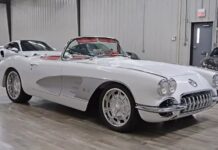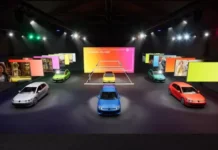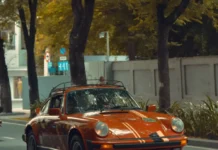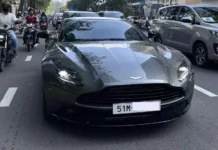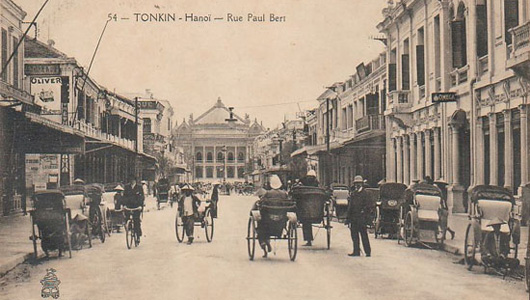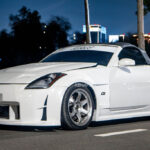Who had the first car in Hanoi? When did sports cars appear in Hanoi? How expensive were cars in early 20th-century Hanoi? These are fascinating stories about the history of car culture in the capital city.
The first cars in Hanoi
According to historical records, the first car appeared in Hanoi in 1901 and belonged to a French priest named Puginier.
In 1906, Asiatic Petrolium opened the first retail store near Long Bien Bridge, providing Hanoi an opportunity to welcome more cars. During the same year, a Frenchman who owned a hand-drawn cart manufacturing facility also possessed two Prima 4 cars, which he used for two years before selling them.
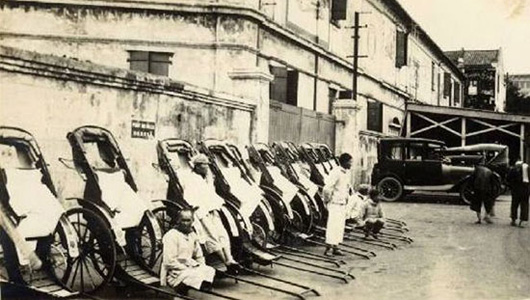
The first person in Hanoi to buy a car was Bui Thai Buoi, a national bourgeois, who purchased a Peugeot petrol car in 1913 for one million francs. This made him the first owner of a gasoline-powered car in Hanoi, 18 years after its invention in Germany in 1885.
Historic documents suggest that in the early 20th century, Hanoi had approximately 30 cars owned by both French and Vietnamese individuals. This number aligns with the figures stated in an article published on July 6, 1933, by Phu Nu Tan Van.
The expensive car prices
In 1917, French-language newspapers in Hanoi began to advertise cars, including Citroen’s installment payment options for a 12-month period and Peugeot’s 12-SX 4-seat model.
In 1920, a car was priced at around 33 million francs, equivalent to 8,000 Indochinese silver coins. At that time, one catty of rice cost about six silver coins.
The government’s policy of only allowing imported cars from France, while banning cars from Germany, Italy, or the United States, resulted in a monopoly by French car manufacturers, who inflated prices for buyers. Consequently, car prices remained high until 1921 when cars from the United States, Italy, and England were imported with a 50% import tax. To compete, French car manufacturers were forced to reduce their prices to only 13 million francs.
Due to the high car prices, the number of cars on the streets of Hanoi was limited
In the 1930s, the garage of Aviat et Compagnie on Phan Chu Trinh Street, which was originally a dealer of Ford and Citroen vehicles and a Solex motorcycle dealership, attracted attention. Established by a French capitalist in the early 1910s, the garage initially specialized in the production of horse-drawn carriages and blacksmithing on Hang Voi Street. In 1925, AVIA expanded rapidly, with 160 workers repairing and producing spare parts for cars as well as assembling vehicles. AVIA moved to its current location at 18 Phan Chu Trinh Street due to this expansion.
By the late 1920s and 1930s, AVIA had become a relatively powerful automobile factory. However, Vietnamese workers, who made up most of the workforce, were treated poorly by the owners. Consequently, early signs of struggle and resistance began to emerge. It was not until the establishment of the Revolutionary Youth Organization, later the Communist Party organizations, that the workers’ struggle at AVIA became more determined and comprehensive. For instance, in May 1929, the Red Union initiated a mass strike involving 160 AVIA workers demanding wage increases, reduced working hours, and the elimination of physical abuse against workers. Comrade Ngo Gia Tu, one of the founders of the first Communist group at 5 Ham Long Street, directly commanded this strike.
High car prices and low income among inner-city residents contributed to the slow growth in the number of cars. In 1921, Hanoi had 4,721 stores, of which three-quarters paid taxes below the minimum level of 10 Indochinese silver coins. Only two stores paid taxes of 300 coins per month. By 1941, the number of stores remained the same, but 10% of them paid taxes amounting to 50%. As a result, only the wealthy could afford to buy cars.
The car enthusiasts of Hanoi
Throughout the 20th century, Hanoi was home to a group of renowned car enthusiasts. Many of them were wealthy bourgeoisie, intellectuals, and merchants.
In 1932, after returning from France, Dr. Ho Dac Di, having worked at Phu Doan Hospital, became one of the three doctors in Indochina (including two French doctors). Due to his high income, Dr. Di bought a Peugeot car, which is still owned by car collectors in Hanoi. The words “Dr. Ho Dac Di” can still be seen on the side of the car.
The first sports car enthusiast in Hanoi was Mr. Nguyen Dinh Duong, who purchased a Renault sports car in 1943 (located at 38 Le Thai To Street). Mr. Duong was the son of Mr. Han Lien, the first antique player in Hanoi and a well-known antique dealer.
Mr. Trinh Duc Kinh, the owner of Thanh Duc Glass Company, which was renowned throughout Indochina and exported glass products to Laos, Cambodia, Morocco, and Algiers, owned a Citroen car. His sister-in-law, the owner of Minh Nam Machinery Company on Kham Thien Street, owned both a Citroen and a Peugeot car.

The Hoa Tuong family on Kham Thien Street owned a Ford Acbas convertible.
Mr. Trinh Van Can, the owner of Cuo Doanh Textile Company, owned a Peugeot car.
Tu Van Wedding Car Rental House on Hang Bong Street had a Ford convertible.
Dr. Hien Nhan, Chairman of Tia Sang Newspaper, owned a Renault 4-horse car.
In Hang Trong Street, there was a silk exporting garage that purchased a luxurious Ford. After two years of use, the garage sold the car to a relative of the Lao royal family in 1948.
In 1944, during World War II, oil scarcity forced Shell and Conony, the two oil companies supplying Vietnam, to reduce production. As a result, most cars had to be parked, and trucks had to convert their engines to run on firewood. This situation lasted until 1945.
Throughout the nine-year resistance war against the French, Hanoi had four gas stations: one on Khâm Thiên Street, another on Bát S? Street, one on Tran Quang Kh?i Street, and one on Hai Bà Trung Street. Hanoi’s driver training school, “Hanoi Automobile,” located on Tran Quoc Toan Street, owned two Jeep cars used for teaching students.
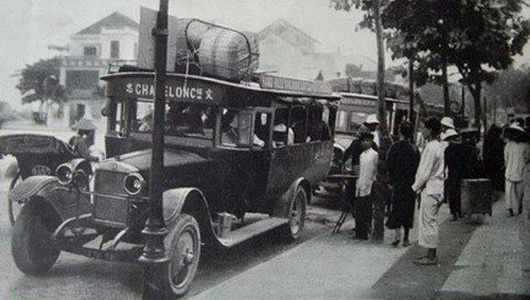
During that time, Hanoi had two garages: Simca (located at the end of Hai Ba Trung Street) and Crytal (located where the current ice factory stands). Due to the use of the ground floors of stores on busy streets such as Hang Duong, Hang Dao, and Hang Gai for commercial purposes, residents who owned cars on these streets had to park their vehicles in front of H?a Lò Prison at night.
Th? Ð?t (TTTD/Tong hop)





